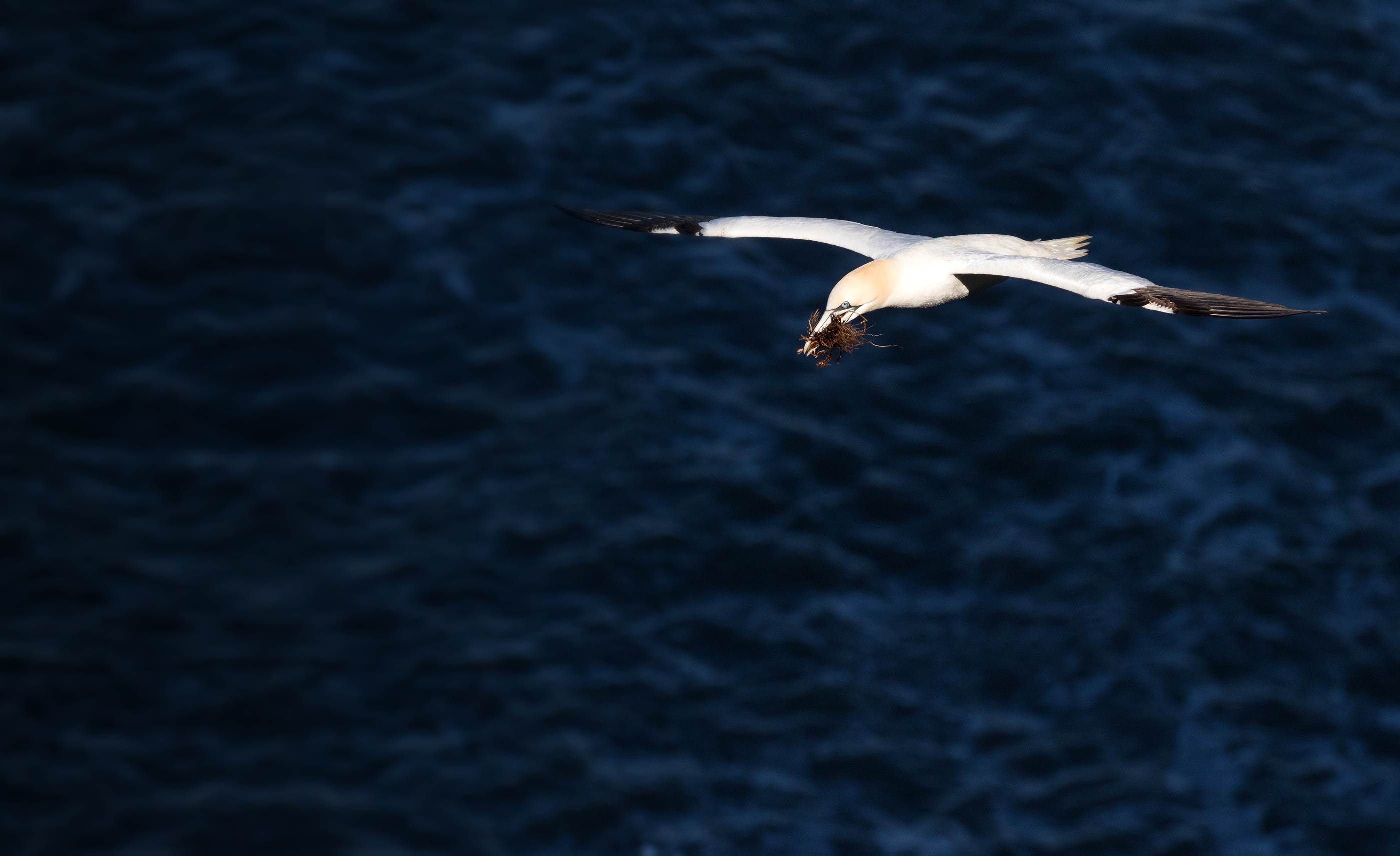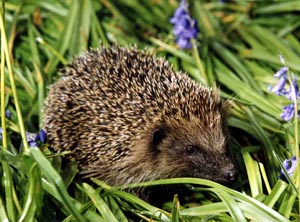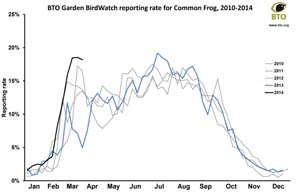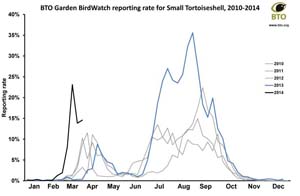Garden wildlife springs into action early
Hedgehog, by John Harding
Common Frog reporting rate graph
Small Tortoiseshell reporting rate graph
The latest results from the Garden BirdWatch survey highlight that some of our garden wildlife species became active a lot earlier this year, than in previous years. The unseasonably mild temperatures of earlier this year meant that people were reporting some species much earlier than expected, which was a huge contrast to early 2013 when snow and freezing temperatures delayed species emergence.
One species that was seen far earlier in the year than is usual was the Hedgehog, the first individuals of which were being reported during late February, almost a month earlier than was the case in 2013, and up to two weeks earlier than in any of the last five years.
In contrast, amphibians, such as Common Frog and Smooth Newt, were not seen earlier than usual, but there appeared to be something of a mass emergence, with a surge in reports from participants’ gardens. From early March, both species were seen in more Garden BirdWatch gardens than they have been for the last five years. The Common Toad did emerge much earlier than in 2013, but there was not much difference between this year and other years.
As you can see from previous news stories, our garden butterflies provide dramatic patterns, and this year was no exception. Small Tortoiseshells not only came out of hibernation a couple of weeks early, they were also seen in incredible numbers compared to previous years, with 23% of Garden BirdWatch gardens reporting them. In comparison, the previous highest emergence peak was 12% in 2012. Brimstone also had a very good start to the year. The first few individuals were not seen much earlier this year than in previous years but the peak emergence in 2013 was just 4% compared to 21% of gardens reporting them in March this year.
Does this mean it’s going to be a good year for these species? It’s too soon to tell. A warm dry summer could be good for butterflies, but may mean that ponds dry out affecting the populations of amphibians. So watch this space to see how our garden wildlife fare this year!









Share this page